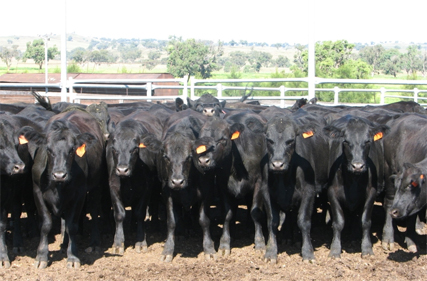 By Tim McRae
By Tim McRae
With AuctionsPlus 2023 Cattle Market Outlook to be released in the coming weeks, a critical review of previous performances always gives a clean slate for the next round of forecasts.
Additionally, any “market forecaster” worth their weight (or at least looking to improve), should always go back and assess what they got right and got wrong to add value, context, and honesty to the next batch of forecasts.
With tongue firmly in cheek, my forecast twelve months ago for an EYCI at 875c/kg cwt by spring 2022 was almost spot on. In the past week, with the EYCI dropping quicker than a Brazilian striker, it registered 888c/kg cwt on the final day of November, then 876c/kg cwt on the first day of summer.
For the past year, the cattle market took a more “volatile path” to reach its current price, whip-sawed by the influence of exotic disease concerns during the middle of the year, then wetter than anticipated conditions through Spring. I stated in early December 2021 that “the EYCI will pressure 875c/kg cwt by Spring 2022…with the weight of history upon the seasonal conditions into the second half of 2022, and an expectant supply surge heading into summer 2022-23”.
So, with the EYCI brag out of the way, what were the five main factors considered 12 months ago and how did they hold up in retrospect:
1. 2022 will be a year of fundamentals versus history.
Fundamentals won, but history was in the fight for much of the year. A cattle herd that is about to enter its third full year of rebuilding had to eventually have an impact on market sentiment. Not to mention the influence of rising costs, from diesel to interest rates, and the seemingly unavoidable expectations for recessions across major markets in 2023.
Comparing the final three months of 2022 to the two previous years, the razor-sharp edge to buyer demand was blunted, with many producers now very carefully considering an upper limit to purchase prices. While in the previous two years, the phrase of “just get me some cattle” was a catch cry, in late 2022 and 2023, meticulous calculations and the fundamentals of “weight beats rates” will return to the fore.
2. Cattle prices will trend lower, with the EYCI challenging the 875c/kg barrier by Spring 2022
I feel this was the easiest of them all. Much like the Socceroos, everyone got very excited about the outcome, knowing that it had far outstripped expectations. Round of 16 at the World Cup versus an EYCI nudging 1200c/kg cwt – both may not be seen again for several years!
3. Any deterioration of pasture supplies into the second half of 2022 will take the sting out of the supply imbalance quickly, and subsequently, prices.
For this one, I was right, but for the wrong reason. Pasture supplies certainly deteriorated through the second half of 2022 – but it was due to too much rain and lack of sunshine, not a return to normal, or below average seasonal conditions. Reports of cattle doing poorer than expected, pushing through months of mud, lush paddocks and dull weather had impacted many finishing weights. The frequent comment had been noted of “I thought they would have been heavier; they are 6-8 weeks behind where I thought they would have been”.
With the difficulty in finishing cattle, combined with the easing in sentiment, the heat came out of the market relatively quickly in late spring, accentuated by hesitancy through the supply chain.
4. Given the strong export markets and demand for Australian beef anticipated over the medium term, these higher herd levels and associated turnoff rates should be comfortably accommodated.
Yes, this holds true as export demand looks great, but with one important caveat. How will the “constrained” processing sector deal with the additional volume of cattle in 2023, or 2024. While there is no doubt that export markets will be very keen for Australian beef in coming years, especially in the US once drought conditions break, but can the processing sector get back into its “flow” after a run of extremely tough years? From COVID disruptions and substantial per head losses since early 2020, through to expectations of labor and wage pressure, can the industry get back to firing on all cylinders in time to absorb the growing supply of slaughter-ready cattle and eventual return to normal seasonal conditions?
5. Watch the volume and price of the “single ladies” into the second half of 2022.
On the one hand, we have not seen the expected surge of light heifers into the market, which would signal herd growth fatigue and a turn in the season. On the other hand, the desire to join, PTIC and sell has been a major feature in the market of the past two years – as a sure-fire way to add additional value to heifers. My general sentiment is that many producers have chosen to retain heifers in late spring and early summer, with the aim to add weight, and decide what to do early in the new year.
Plenty of feed, no water concerns and heavier heifers allow the producers more options heading into 2023. Indeed, once they are sold, they can’t come back. However, one more season of full-steam joining and herd expansion, will just add more weight and numbers to the eventual supply surge of a national herd approaching above-average levels.
-AuctionsPlus
